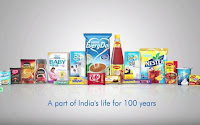BRAND LAUNCH
Maruti Suzuki is all set to launch hatchback Baleno next week
Maruti Suzuki will be coming up with the all new Baleno which will be exported to
around 100 countries as a made-in-India car. The production of the previous model
of Baleno was stopped by Baleno a few years back, now they are extremely upbeat
about the new launch. Stating that the premium hatchback segment was growing
at a rate of 20 per cent year-on-year, the company would sell Baleno as the second
product from Nexa outlet
Apple launches iPhone 6S, 6S Plus in India
Apple has launched iPhone 6S and 6S plus which have been Apple’s fastest
roll out in India. It is the
first time that the phone is available in the Indian markets after just a month passed when it was launched in USA. The iPhone 6S will be available at INR 62,000 for the 16GB version, INR 72,000 for the 64GB version, and INR 82,000 for the 128GB storage variant. The iPhone 6S Plus has been priced at INR 72,000 for the 16GB version, INR 82,000 for the 64GB version, and INR 92,000 for the 128GB variant.
first time that the phone is available in the Indian markets after just a month passed when it was launched in USA. The iPhone 6S will be available at INR 62,000 for the 16GB version, INR 72,000 for the 64GB version, and INR 82,000 for the 128GB storage variant. The iPhone 6S Plus has been priced at INR 72,000 for the 16GB version, INR 82,000 for the 64GB version, and INR 92,000 for the 128GB variant.
BRAND WATCH
New OOH campaign of Times Card eyes Mumbai Metro’s on-the-go consumers
What can be better for a marketer than grabbing 32 million unique eye-balls
in a month for an advertisement? This is the kind of reach Mumbai metro
promises to have which has made all the brands go gaga over the prospects.
Times Card has recently launched its “Do more of what you love” OOH campaign
with the Mumbai metro. The campaign is in association with HDFC and
aims to match up with the demands of the new age urban consumer segment
Indian brand consultancy firm Brands of Desire has inked into a strategic tie up
with the Dutch brand
Consultancy firm Brand Dialogue and have combined their operations and will be together working for a long term to provide end to end branding solutions. Brand Dialogue will act as a separate company and will work towards improving the understanding of creative industries in Europe and India
Consultancy firm Brand Dialogue and have combined their operations and will be together working for a long term to provide end to end branding solutions. Brand Dialogue will act as a separate company and will work towards improving the understanding of creative industries in Europe and India
MEDIA
Indian media, entertainment can be a $100 billion industry: CII
Indian media and entertainment industry can possibly log $100 billion (Rs.650,000
crore) turn over by 2025 given it gets sufficient base and government bolster, the
Confederation of Indian Industry (CII) said recently. “With a growth potential of
13-16 percent year-on-year it has the potential to emerge as one of the largest
employment providers, contributing significantly to the gross domestic product,”
said the paper titled Vision 2020 Document on Media and Entertainment Sector.
BSE to trawl social media for information on listed companies
Leading bourse BSE will trawl the Social Media giants, including Twitter, for data identified with
recorded organizations as it hopes to venture up observation in the midst of stringent revelation administration. The move is to ensure that the investors can make proper decisions and gauge market sentiment through social media channels. The stringent disclosure regime has been put in place to curb instances of companies selectively leaking information, including through media and without informing the investors first, for illegal gains.
BSE to trawl social media for information on listed companies
Leading bourse BSE will trawl the Social Media giants, including Twitter, for data identified with
recorded organizations as it hopes to venture up observation in the midst of stringent revelation administration. The move is to ensure that the investors can make proper decisions and gauge market sentiment through social media channels. The stringent disclosure regime has been put in place to curb instances of companies selectively leaking information, including through media and without informing the investors first, for illegal gains.
AD WATCH
NESCAFE Cartoonist AD
The advertisement depicts how sometimes life gives a setback just to give one a
chance to make it even bigger. An extremely poignant mood is set in the beginning
but the end is really happy when the protagonist makes it big as a cartoonist.
In short the advertisement conveys that we all have a dream, an ambition,
which we work towards achieving. But life does not always go as planned. What
kept the protagonist going was his cup of Nescafe.
Youtube link: https://www.youtube.com/watch?v=GP_zdW6sl-k
Youtube link: https://www.youtube.com/watch?v=GP_zdW6sl-k
Iphone 6 new AD
The advertisement depicts how sometimes life gives a setback just to give one a chance to make it
even bigger. An extremely poignant mood is set in the beginning but the end is really happy when the protagonist makes it big as a cartoonist. In short the advertisement conveys that we all have a dream, an ambition, which we work towards achieving. But life does not always go as planned. What kept the protagonist going was his cup of Nescafe.
Youtube link: https://www.youtube.com/watch?v=GP_zdW6sl-k
The advertisement depicts how sometimes life gives a setback just to give one a chance to make it
even bigger. An extremely poignant mood is set in the beginning but the end is really happy when the protagonist makes it big as a cartoonist. In short the advertisement conveys that we all have a dream, an ambition, which we work towards achieving. But life does not always go as planned. What kept the protagonist going was his cup of Nescafe.
Youtube link: https://www.youtube.com/watch?v=GP_zdW6sl-k











































